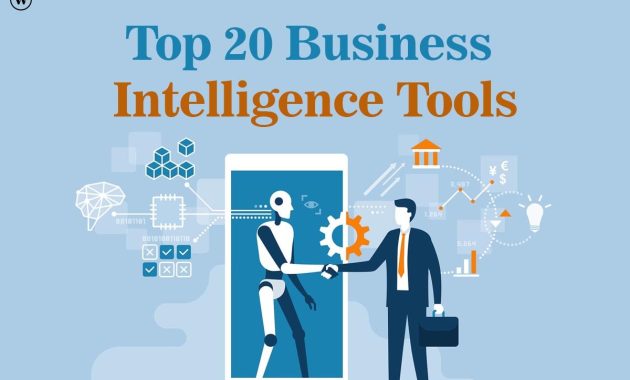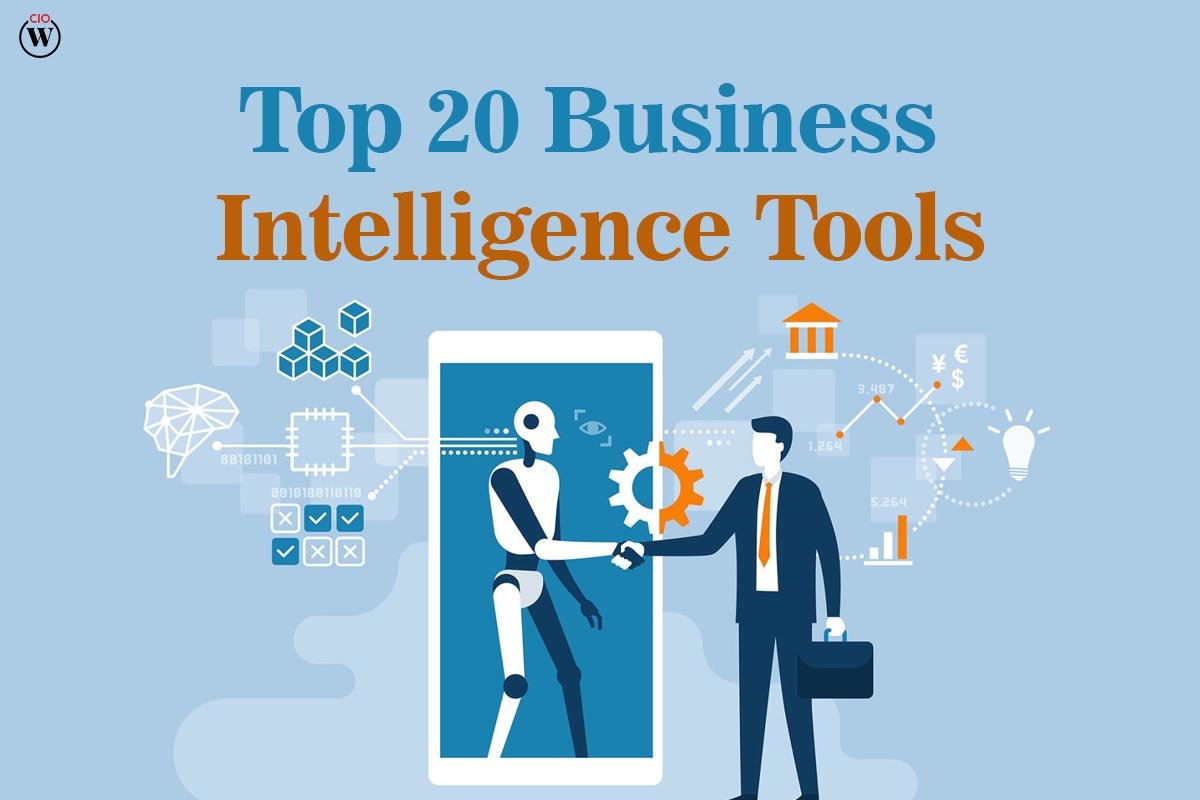
Business Intelligence Tools: Transforming Data into Strategic Advantage
In today’s data-driven landscape, organizations are drowning in information. The challenge isn’t just collecting data; it’s extracting actionable insights from it. This is where Business Intelligence (BI) tools step in. They are the linchpin for converting raw data into strategic advantages. This article delves into the world of Business Intelligence tools, exploring their capabilities, benefits, and how they empower businesses to make data-informed decisions.
Understanding the Essence of Business Intelligence
Business Intelligence, at its core, is the process of transforming data into meaningful and useful information. It encompasses various technologies, applications, and practices. These tools help organizations analyze current and historical data. The goal is to identify trends, predict future outcomes, and make informed decisions. Effective Business Intelligence provides a competitive edge. It enables businesses to adapt quickly to market changes and optimize their operations.
The scope of Business Intelligence extends beyond simple reporting. It involves data mining, online analytical processing (OLAP), performance management, and benchmarking. These components work together to provide a comprehensive view of business performance. This view allows for better decision-making at all levels of an organization.
Key Features and Functionality of Business Intelligence Tools
Business Intelligence tools offer a wide array of features. These features are designed to facilitate data analysis and reporting. Some of the most important functionalities include:
- Data Integration: The ability to connect to various data sources. These sources include databases, spreadsheets, and cloud services. This ensures a unified view of the data.
- Data Visualization: Creating charts, graphs, and dashboards. These visualizations make complex data easier to understand.
- Reporting and Analysis: Generating reports. These reports provide insights into key performance indicators (KPIs). They also enable in-depth analysis.
- Data Mining: Using techniques to discover patterns and trends within large datasets. This uncovers hidden relationships and insights.
- OLAP (Online Analytical Processing): Providing fast, multi-dimensional analysis. This is crucial for complex queries and data exploration.
- Predictive Analytics: Using statistical models to forecast future outcomes. This helps in strategic planning.
- Mobile BI: Accessing reports and dashboards on mobile devices. This allows for on-the-go decision-making.
These features, when combined, empower businesses. They can make data-driven decisions to improve performance. They can also increase efficiency and gain a competitive edge. Choosing the right Business Intelligence tools is critical. It requires careful consideration of these functionalities.
Benefits of Implementing Business Intelligence Tools
Implementing Business Intelligence tools brings a multitude of benefits to organizations. These benefits span across various departments and functions. Some of the most notable advantages include:
- Improved Decision-Making: Data-driven insights lead to better and faster decisions. This improves business outcomes.
- Increased Efficiency: Automating reporting and analysis tasks frees up resources. This increases operational efficiency.
- Cost Reduction: Identifying inefficiencies and optimizing processes. This leads to significant cost savings.
- Enhanced Customer Experience: Understanding customer behavior. This helps in tailoring products and services.
- Competitive Advantage: Gaining insights that competitors may miss. This helps in staying ahead in the market.
- Better Risk Management: Identifying potential risks early. This allows for proactive mitigation strategies.
- Improved Compliance: Streamlining reporting to meet regulatory requirements. This ensures adherence to industry standards.
These benefits highlight the transformative power of Business Intelligence tools. They are essential for any organization seeking to thrive in today’s data-rich environment. The benefits are clear and contribute to long-term success.
Top Business Intelligence Tools in the Market
The market offers a wide variety of Business Intelligence tools. Each tool caters to different needs and budgets. Some of the leading tools include:
- Tableau: Known for its user-friendly interface and powerful data visualization capabilities. It is a favorite among analysts.
- Microsoft Power BI: Integrated with Microsoft’s ecosystem. It offers a comprehensive suite of features. It is cost-effective.
- Qlik Sense: Uses associative data modeling. It enables users to explore data in innovative ways.
- Looker (Google Cloud): A web-based platform. It focuses on data exploration and collaboration.
- Sisense: Offers in-database analytics and a focus on embedded analytics. It is suitable for complex data needs.
- SAP BusinessObjects: A robust suite of tools. It is for enterprise-level Business Intelligence.
Choosing the right tool depends on specific business requirements. Factors to consider include data volume, user skill levels, and budget constraints. Evaluating these tools is a critical step.
Selecting the Right Business Intelligence Tool
Choosing the right Business Intelligence tool is a critical decision. It significantly impacts the success of a Business Intelligence initiative. Several factors should be considered during the selection process. These factors include:
- Data Sources: Ensuring the tool can connect to all relevant data sources. This covers databases, cloud services, and spreadsheets.
- Ease of Use: Opting for a tool with an intuitive interface. This reduces the learning curve.
- Scalability: Choosing a tool that can handle growing data volumes and user needs. This ensures long-term usability.
- Features and Functionality: Assessing whether the tool offers the required features. These include data visualization, reporting, and analysis.
- Integration Capabilities: Ensuring the tool integrates seamlessly with existing systems. This enhances efficiency.
- Cost: Considering the total cost of ownership. This includes licensing, implementation, and training.
- Support and Training: Evaluating the availability of vendor support and training resources. This is important for successful adoption.
By carefully evaluating these factors, organizations can choose the right tool. This helps them transform data into actionable strategies. It also maximizes the return on investment in Business Intelligence.
Implementing Business Intelligence Tools: Best Practices
Successful implementation of Business Intelligence tools requires careful planning and execution. Following best practices can maximize the benefits. Some key steps include:
- Define Objectives: Clearly defining the goals and objectives of the Business Intelligence initiative. This aligns efforts with business strategy.
- Data Preparation: Ensuring data quality. This involves cleaning, transforming, and integrating data.
- User Training: Providing adequate training to users. This ensures they can effectively use the tool.
- Phased Implementation: Implementing the tool in phases. This minimizes disruption and allows for iterative improvements.
- Stakeholder Engagement: Involving stakeholders. This ensures buy-in and alignment with business needs.
- Performance Monitoring: Regularly monitoring the performance of the Business Intelligence system. This allows for continuous improvement.
- Security Measures: Implementing appropriate security measures. This protects sensitive data.
By following these best practices, organizations can ensure a smooth and successful implementation. This will maximize the value of their Business Intelligence investments.
Future Trends in Business Intelligence
The field of Business Intelligence is constantly evolving. Several trends are shaping its future. Staying abreast of these trends is crucial for organizations. Some key trends include:
- Artificial Intelligence (AI) and Machine Learning (ML): Integrating AI and ML. This automates insights and predictions.
- Data Democratization: Making data and insights accessible to a wider audience. This empowers more employees.
- Cloud-Based BI: Shifting to cloud-based solutions. This offers scalability and flexibility.
- Self-Service BI: Enabling users to create their own reports and dashboards. This fosters data literacy.
- Embedded Analytics: Integrating Business Intelligence directly into business applications. This enhances decision-making.
- Focus on Data Governance: Ensuring data quality, security, and compliance. This builds trust in data.
These trends will continue to shape the Business Intelligence landscape. Organizations that embrace these trends will be well-positioned. They will gain a competitive edge in the years to come.
Conclusion: Harnessing Data for Strategic Success
Business Intelligence tools are no longer a luxury. They are a necessity for businesses seeking to thrive in the digital age. By leveraging the power of data, organizations can make informed decisions. They can optimize operations and gain a competitive advantage. Choosing the right tools and implementing them effectively is crucial. Embracing the latest trends is essential for future success. Transforming data into strategic advantage is the ultimate goal. This is achieved through the effective use of Business Intelligence tools.
[See also: Data Visualization Best Practices] [See also: The Role of AI in Business Intelligence] [See also: Choosing the Right BI Tool for Your Business]

